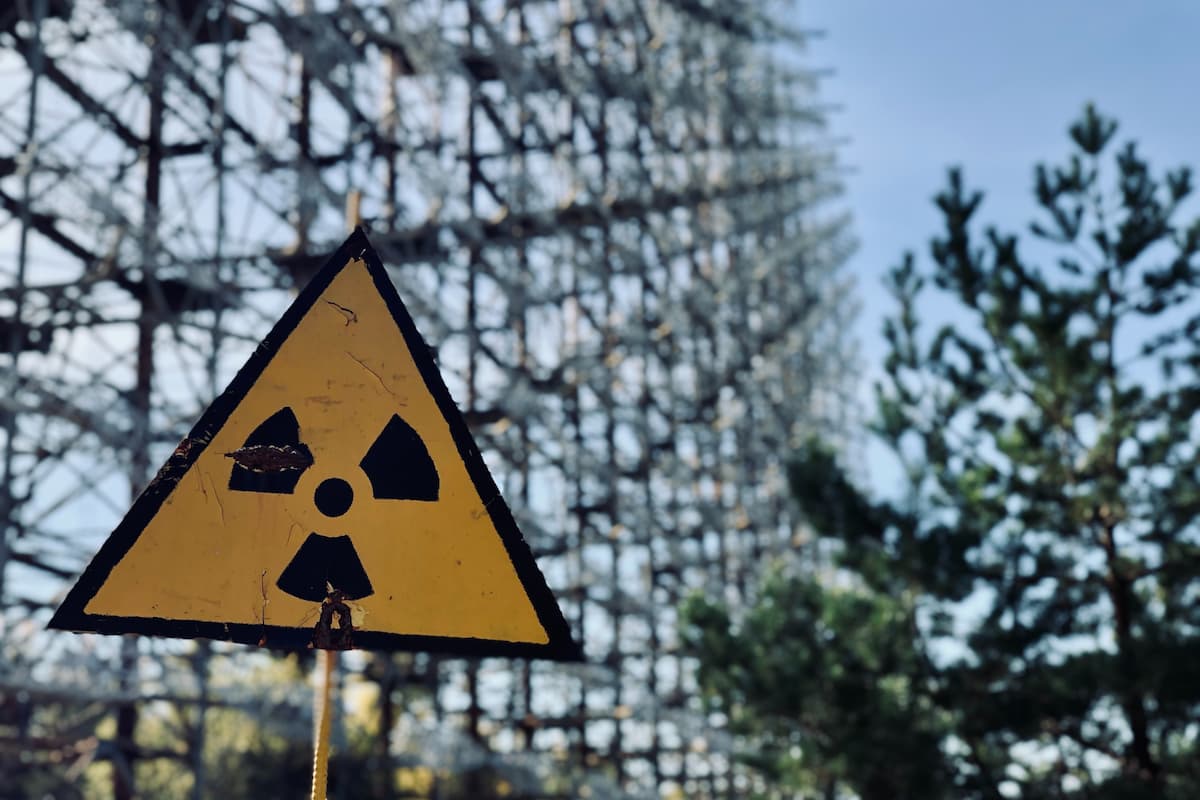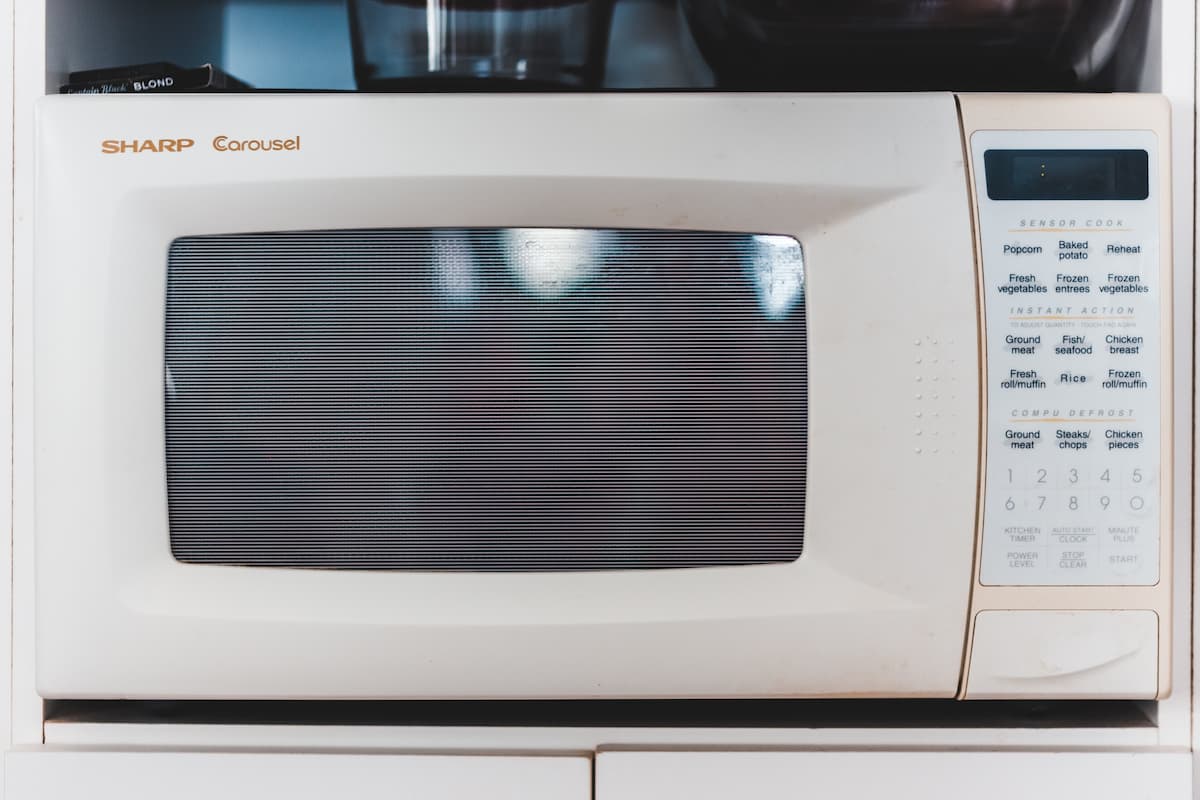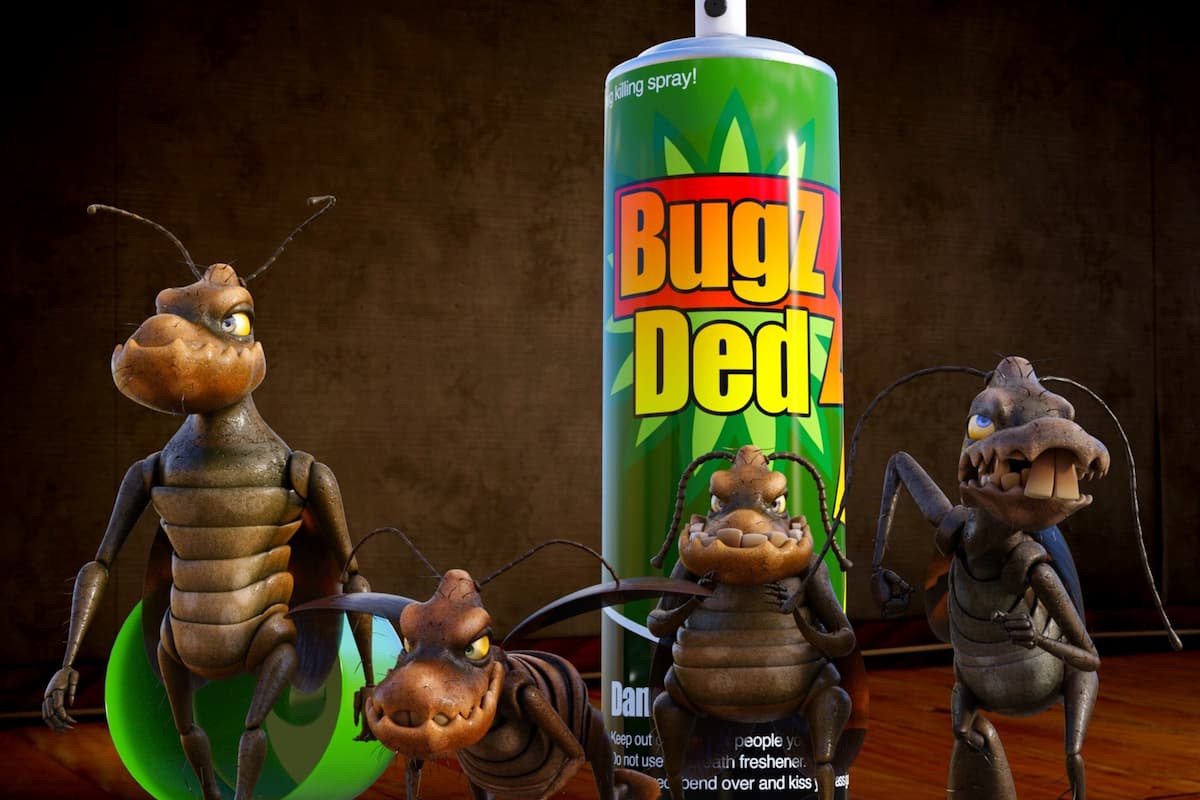Why Don’t Cockroaches Die In The Microwave?
Have you ever seen a roach inside your microwave, turned it on, then saw it move around like nothing’s happening?
There are two reasons for that, and they’re both to your disadvantage: 1. the cockroach’s anatomy and 2. the way microwaves work.
Cockroaches don’t die in the microwave because they’re highly resistant to radiation. Unless they’re exposed to microwaves for an extended period of time, they’ll walk away unscathed. Microwaves also have cool spots where the roach will seek cover, so the heat also won’t have an effect.
The Effect of Radiation on Cockroaches

Cockroaches are naturally resistant to radiation, and specific factors determine whether microwave radiation can have a fatal effect.
The first one has to do with how the cells of a cockroach divide.
The reason why radiation is a problem for most living creatures is that it damages the DNA of a cell.
Cells that divide rapidly, like those found in humans, can’t offset that damage and will die.
It’s why radiation therapy (radiotherapy) is a proven medical treatment for tumors or other cancerous cells.
The cells of a cockroach, however, rarely divide. When they do, it’s usually before molting, when the insect sheds its outer layer (aka its exoskeleton).
Radiation still affects cockroach cells, but they can repair themselves.
If you’ve successfully killed a roach through some form of radiation, they were likely undergoing cell division.
However, even if you’re dealing with a molting roach, microwaves might not be enough to kill because of the science behind microwave radiation.
Microwaves have nodes and antinodes. The antinode point is a high power area, while the node point is a low power area.
If the roach stands still in a node point, it won’t die because the power isn’t strong enough.
If it stands still in an antinode point, it won’t die because microwaves cook food by causing water molecules to vibrate and release heat.
Roaches have little water in their bodies, making the whole process pointless.
What’s more, any heat absorbed by the insect is released back into the air, which actually cools it!
Essentially, roaches are almost impossible to kill in a microwave. Leaving it on for several hours might do the trick, but that’s a big “might.”
Also, you probably don’t want to kill a cockroach in your microwave if you’re going to use it for food later.
How Cockroaches Escape the Heat in a Microwave
As we all know, microwaved food can come out scorching hot in one section and lukewarm (maybe even straight-up cold) in another.
Microwaves heat food by vibrating water molecules, so food with more water will heat faster. Cockroaches don’t have a lot of water, so they aren’t affected.
Microwave ovens also have cold zones, which occur when the microwaves collide and cancel each other out.
The cockroach will find one of these zones and stay there for as long as possible.
While a rotating table helps with the problem of heating leftovers, it doesn’t do much to eliminate radiation-proof insects.
Is My Microwave Safe With Cockroaches Inside?

Just because you can’t blow up a roach doesn’t mean you shouldn’t take it out of the microwave.
Seeing one might signify you’re hosting a whole squad inside your appliance.
If you aren’t, the one starting you in the eye might be tempted to move in and reproduce.
Roaches also carry harmful pathogens and food-borne illnesses that can make you very ill.
They might also gnaw on the wires in cases of starvation.
No matter what, if you see cockroaches in your microwave, you’ll want to deal with the problem before you have a massive infestation on your hands.
How To Remove Cockroaches From a Microwave
The first step to removing cockroaches from your microwave is catching the ones you can see and then deep cleaning the appliance.
By scrubbing away the grease, you remove a food source and break up any pheromones they’ve left to signal to others.
The second way to remove the insects is using bait traps.
Laying out traps after a good clean ensures you capture or poison most of the roaches in your microwave.
If you use bait traps that capture roaches, change them out often. If you use a bait trap with an insecticide, replace it periodically.
Repeat the process until none of them are left.
Can You Use Cockroach Spray in a Microwave?

It would be best if you didn’t spray pesticide inside a microwave.
The chemicals can tamper with the circuits inside the appliance.
Regular usage of pesticide spray also results in chemical build-up, causing your microwave to break down.
Also, you probably don’t want to be ingesting pesticides, so unless you sacrifice your microwave to eliminate an infestation, it’s likely not the healthiest course of action.
Can Cockroaches Really Survive a Nuclear War?
There’s an old saying that if humans start a nuclear war, cockroaches will be the only things that survive.
It’s probably an exaggeration and a way to emphasize the resilience of a cockroach.
There’s only one way to know whether cockroaches will survive a nuclear war, and it’s not really an experiment we want to conduct.
Likely, if the radiation from nuclear fallout doesn’t kill them, either the shock wave or the extreme heat from the blast will.
What’s certain is that cockroaches have a higher chance of surviving a nuclear war than humans do.
Conclusion
Microwave ovens are an ideal home for cockroaches as they’re excellent food sources.
If you’re dealing with an infestation, there are things you can do to help keep them away from your appliance.
One is cleaning your microwave regularly. Another is taking out the food after heating – don’t leave it in for long periods of time.
Lastly, always keep the door closed.
If you’re still finding roaches in your microwave, trying to nuke them won’t work as they’re basically immune to radiation. You’re better off calling an exterminator to help you deal with the issue.
